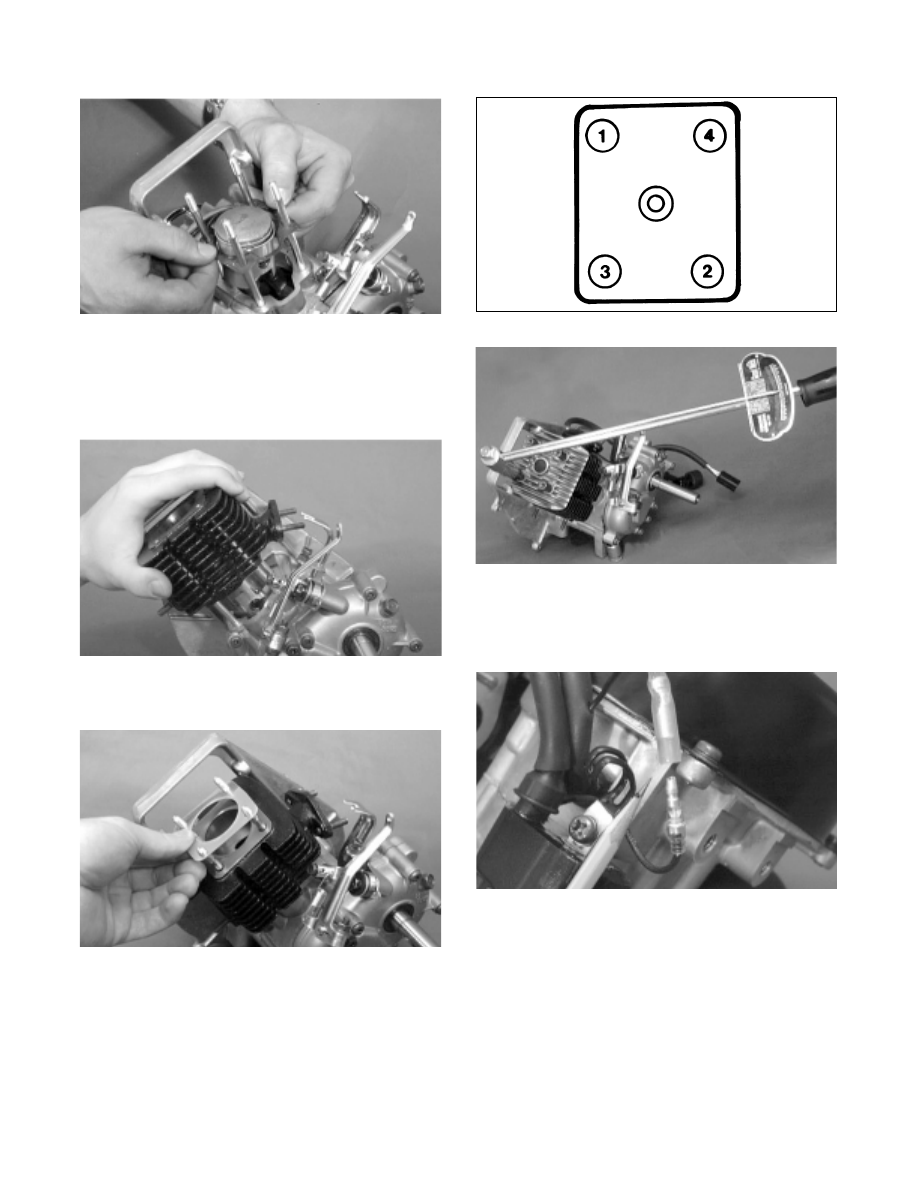Snowmobile Arctic Cat (2000 year). Instruction - part 18

Fig. 2-233
A770
21. Using a piston holder to “square” the piston,
compress the piston rings and install the cylinder.
Do not force the cylinder. If cylinder binds, remove,
check the position of the piston rings, and install.
Fig. 2-234
A771
22. Place the head gasket into position.
Fig. 2-235
A772
23. Place the cylinder head into position. The head must
be positioned so the cooling air flow is parallel to
the fin pattern.
24. Tighten cylinder head nuts to 0.8-1.2 kg-m (6-9
ft-lb) using the pattern shown.
Fig. 2-236
725-318A
Fig. 2-237
A773
25. Place the ignition coil into position; then secure with
two screws and lock washers. Connect the coil lead
to the lead from the magneto.
Fig. 2-238
A757
26. When installing the stator plate, align the scribed
marks made during disassembly. Apply red Loctite
#271 to the three screws; then tighten the screws
securely.
2-56